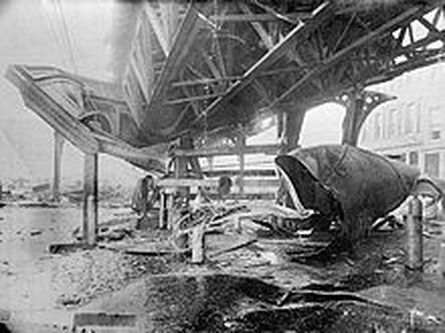

The Purity Distilling Company molasses tank had burst, releasing millions of gallons of molasses into the streets of Boston. At 12:30 in the afternoon, persons in the area heard a “sound like a rumble” and the ground shook.


On January 15, 1919, the weather was warmer than normal, allowing the molasses inside the tank to heat up and thin. The five-story tall steel tank at 529 Commercial Street in Boston held 2.3 million gallons of molasses weighing an astonishing 26 million pounds. This tragic flood was a major step forward in corporate accountability and more meaningful regulations in the United States.The Great Molasses Flood (aka Boston Molasses Disaster)Īt the time, molasses was a common sweetener and used to produce ethanol for alcoholic beverages and military munitions. Once Boston had adopted this standard, many other municipalities across the country followed suit in a requirement that stands to this day.Īt a time where companies were rarely held accountable for their practices, the United States Industrial Alcohol (the Purity Distillery's parent company) was forced to pay almost a million dollars in damages to those affected and their families. These findings changed regulatory laws in Boston, and they required architects and engineers to sign off on plans and file them with the city. He eventually discovered that no one with any with any engineering or architectural expertise reviewed the plans for the tank at any point during its construction or use. It took decorated World War I veteran Hugh Ogden six years to collect more than 45,000 pages of testimony from more than 3,000 witnesses. The Massachusetts Superior Court eventually assigned an auditor to get to the bottom of the flood. Additionally, most very large outdoor storage tanks also include secondary containment -a trough or bowl built around the base of the tank that can hold it's entire contents should it leak or rupture." A Sticky Investigation Tanks are well vented, often with two or more pressure and vacuum relief devices. And smaller 275 gallon totes clearly do not present a flood risk.

"Stainless steel has many wonderful properties," continues Brenneman, "which include an extreme resistance to rust or deterioration and incredible high strength and rigidity. "Modern day distillers store molasses in small totes of about 275 gallons each, or in stainless steel tanks at larger volumes," he says via email. Jesse Brenneman, co-founder of the Deacon Giles Distillery in Massachusetts explains why a flood of this nature wouldn't even be possible today. Since the tank wasn't a building or a bridge, there was no regulatory agency responsible for inspecting or regulating it. "The tanks actually broke, because at the time they were made of steel that was too thin, reportedly below standards, even for the time, and the sheer weight of over 2 million gallons of molasses was far too much to bear, eventually causing the tank to fatigue and break, spilling ungodly amounts of molasses out of the warehouse and into the streets." "It's a common misconception that the tanks exploded," says Jamie Windon, owner and co-founder of Lyon Distilling in Maryland, via email. With little in the way of regulation at the time, the Purity Distilling Company tossed together its molasses tank without the benefit of anyone qualified to design so massive a tank. But the reason for the tank's explosion was much more insidious: reckless craftsmanship. 16 edition of "The Boston Globe" suggested that an internal explosion could have been the culprit. Initial reports suggested that anarchists might have blown the massive tank owned by the Purity Distilling Company. 15, 1919, just a year before Prohibition would go into effect, the tank ruptured. Just before the disaster, the tank had been filled close to capacity with a recent shipment of molasses. Later investigation found that the tank wasn't structurally sound to begin with - in fact, it had even been quickly painted brown to hide the fact that it leaked molasses constantly. In 1915 they had erected a massive steel tank, 52 feet (15.9 meters) tall, 90 feet (27.4 meters) across, and able to hold 2.5 million gallons (9.5 million liters) of molasses, which was a prime ingredient for their enterprise. The Purity Distilling Company was a manufacturer of rum and industrial alcohol in Boston's North End.


 0 kommentar(er)
0 kommentar(er)
